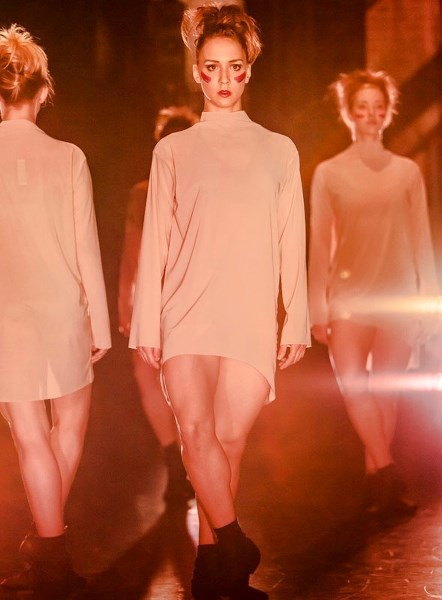Under the leadership of artistic director Louis Robitaille, Les Ballets Jazz de Montreal has reinvented its repertoire and built an international reputation for attracting cutting edge choreographers.
But as the dancers take on new challenges, how do they handle making material that’s several years old look fresh, especially if they are on a two-month, non-stop tour of Canada and Europe?
For BJM dancer Ashley Werhun, it means being well adapted to the road.
“You have to be grounded. You have to take something for yourself. You have to plan ahead. If I’m in a city where I know I can get a good massage, I’ll book ahead. Or I’ll take an afternoon and go for a walk or to a museum or art gallery. As an artist you need to energize yourself,” said Werhun, a veteran of the road since she joined BJM in 2014.
Raised in St. Albert, Werhun launched her professional career with San Francisco’s Alonzo King Lines Ballet and the Trey McIntyre Dance Project before joining BJM two years ago.
The company of 13 athletic and technically impressive dancers is touring western Canada with a planned stop at the Arden Theatre on Saturday, Feb. 20 before embarking on a European tour that ends in April.
Robitaille has built the evening’s repertoire around three signature choreographies that test the dancers’ virtuosity. They are Rouge, Mono Lisa and Kosmos, three dances equally intense yet infused with differing energies.
The opener is Brazilian choreographer Rodrigo Pederneiras Rouge. His hybrid style mixes capoeira, samba, forrĂł, ballroom dancing and classical ballet. In Rouge he pays tribute to South and North American indigenous cultures.
“The original score by the Grand Brothers is inspired by traditional native music. It has a beautiful sound. There are themes of confrontations and clashes of culture and power dynamics. The whole time your heart is pumping and the room is filled with potent drum beating,” said Werhun.
In Mono Lisa, Israeli choreographer Itzik Galili updates the classical pas de deux on pointe to a fiery game of seduction set to industrial music based on typewriter sounds. It is elegant, sensual and violent, but as Werhun explains, the dance is extremely difficult to execute.
“It’s very athletic. Dancers fly through the air and land in their partner’s arm in the middle of doing splits. Technically, it’s very difficult. But the way Mono Lisa is etched out, you have to be classically trained and almost virtuosic in movement. We are highly trained classical dancers, but in some pieces you don’t see it. In Mono Lisa, you see the dancers as highly trained technicians.”
The closing work is Greek choreographer Andonis Foniadakis Kosmos, a dance inspired by the chaotic urban frenzy and hustle of daily life.
“Andonis Foniadakis uses wide sweeping gestures and mass movement of dancers to create the tensions. There’s the frantic energy of day-to-day life of steel and structures, and then in one note everything changes. It’s like coming down, a beautiful end to lovely evening.”
Preview
Rouge, Mono Lisa, Kosmos<br />Les Ballets Jazz de Montreal<br />Saturday, Feb 20 at 7:30 p.m.<br />Arden Theatre<br />5 St. Anne Street<br />Tickets: $46 adult, $35 student Call 780-459-1542 or at ticketmaster.ca




